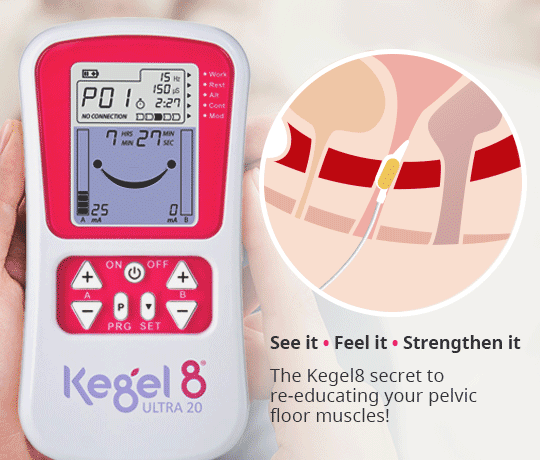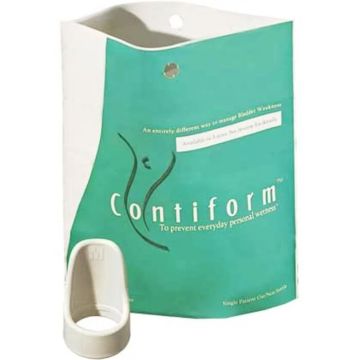
Most of us would like to lose weight. But, we’d also like to keep our pelvic health in tip top condition too.
Being healthy and fit is often one of our top priorities. But what happens when improving one part of your health negatively impacts on another? This can often be the case for people who are trying to lose weight.
We’re so focused on improving our outside appearance that we forget that our insides need a little TLC and maintenance too!
Engaging in high impact fitness regimes can deteriorate the health of your pelvic floor. “But how else am I meant to lose weight?” Fear not, as the team at Kegel8 have compiled a list of top tips for losing weight whilst maintaining a healthy pelvic floor. Read on to learn more…
What’s the Association Between Weight and the Pelvic Floor?
Obesity is linked to a heightened risk of incontinence-related conditions, such as type 2 diabetes mellitus and osteoarthritis associated with poor mobility. In addition to these, which may increase bladder dysfunction, urinary bladder pressure is greater in obese patients when compared with non-obese.
The National Institute for Health & Care Excellence (NICE) specifies that women with a body mass index (BMI) of over 30, combined with urinary incontinence or overactive bladder, should be advised to lose weight. A BMI over 30 classifies the individual as obese.
However, a variety of studies have found that 5-10% weight loss in overweight women results in a great improvement in urinary incontinence symptoms.
Tam Fry, chairman of the National Obesity Forum has said that: "The skeleton is perfectly designed to cope with a healthy weight. But if you're excessively heavy or obese, hips, knees and ankles may all suffer. Excess weight can be particularly damaging to your pelvic floor, which supports all of your crucial internal organs. The National Obesity Forum fights to raise awareness of how obesity can be detrimental to your health and wellbeing. "
Kegel8’s Top Tips on Weight Loss for a Healthier Pelvic Floor
- Keep on Kegeling – Try to include Kegel exercises within your fitness regime, you can perform them with each set of normal exercises you do! Learn how to do your pelvic floor exercises here.
- Ban the beer – Well, reduce your intake at least. Not only is alcohol high in calories, but it is also a diuretic that can increase your production of urine, making an overactive bladder even worse!
- Control your caffeine – Just like alcohol, caffeine is also a diuretic, so try to manage your intake. Although caffeine itself isn’t particularly high in calories, our sweet treat variants, like Frappuccino’s and lattes can raise the numbers.
- Forget the fizzy drinks – You may be starting to see the pattern here. Carbonated drinks can really irritate your bladder so it’s best to cut back on them. Just remember, there’s nothing better than good cup of water for your bladder, plus there’s no need to worry about calories when drinking water!
- Approach with caution – Avoid participating in exercising that strain your pelvic floor. Read on to learn what exercises are best for pelvic floor health and safety.
- Change it up – Choose a number of low impact exercises to try and then vary the exercise regularly – this can help to promote weight loss.
- Focus on abdominal fat (visceral fat) – When standing, the weight on your abdomen combines with gravity to create downward pressure on your pelvic floor. This can strain your pelvic floor muscles and tissue and can worsen pelvic floor dysfunctions such as prolapse.
What are the Best Exercises to Lose Weight for a Healthier Pelvic Floor?
- Swimming – Swimming breast stroke is one of the best ways to burn energy and lose weight, whilst also being low impact for your pelvic floor.
- Pilates – Pilates is a mat-based exercise class that targets the deep postural muscles of the abdomen, spine and pelvic floor to improve overall central core stability and posture. This well-structured and carefully performed exercise is safer for your pelvic floor frantic jumping and activities where you have to run around.

What Exercises Should You Avoid to Protect Your Pelvic Floor?
- Intense Cardio - If the exercises you choose include running or jumping, the pressure that is put onto your pelvic floor muscles can result in a pelvic floor disorder occurring. Women’s Health Physiotherapist, Emma Brockwell, notes that ground reaction force in running is thought to be between 2.5 to 3 times your body weight. Your body has to be able to manage this load.
- Weight lifting – Lifting heavy objects can force a huge amount of pressure on your pelvic floor. However, if weight lifting is part of your routine, try performing a Kegel whenever you lift to help support your pelvic floor.
Which exercises have you already tried, or what are you planning on incorporating into your fitness regime? Let us know in the comments below or over on Twitter. Together, we will be stronger!
Sources
[1] Kenway, M. (2014) The Best Exercise for Weight Loss that Avoids Prolapse Worsening [online]. Pelvic Exercises [viewed 20/11/2018]. Available from https://www.pelvicexercises.com.au/best-exercise-for-weight-loss/
[2] Montague, H. (2018) Optimising weight loss advice in obese women with urinary incontinence: a review. Urology News, 23(1):18-20.
[3] NICE (2015) Urinary Incontinence in Women: Management [online]. National Institute of Health and Care Excellence [viewed 20/11/2018]. Available from https://www.nice.org.uk/guidance/cg171
[4] Noblett, K.L., Jensen, J.K., Ostergard, D.R. (1997) The relationship of body mass index to intra-abdominal pressure as measured by multichannel cystometry. Int Urogynaecol J, 8(6):323-326.
[5] Parker-Autry, C.Y., Subak, L.L., Creasman, J. et al. (2013) Urodynamic changes associated with weight loss in overweight and obese women with urinary incontinence. Female Pelvic Medicine and Reconstructive Surgery, 19(117):610-617.
[6] PhysioPilates Academy (2018) About Pilates [online]. PhysioPilates Academy [viewed 20/11/2018]. Available from https://www.physiopilatesacademy.co.uk/about-physiopilates/
[7] Public Health England (2016) Health Risks of Adult Obesity [online]. PHE [viewed 20/11/2018]. Available from https://webarchive.nationalarchives.gov.uk/20170110171059tf_/https://www.noo.org.uk/NOO_about_obesity/obesity_and_health/health_risk_adult
[8] Vissers, D., Neels, H., Verdandel, A. et al. (2014) The effect of non-surgical weight loss intervention on urinary incontinence in overweight women: a systematic review and met-analysis. Obes Rev, 15(7):610-617.







